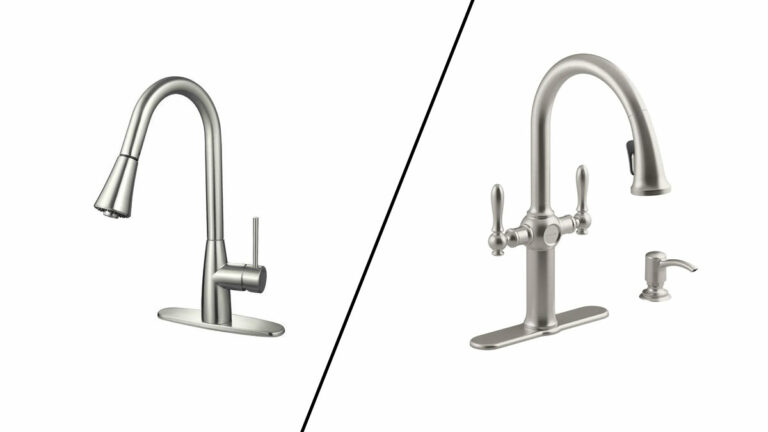How to Seal Kitchen Sink to Countertop
Sealing the kitchen sink to your countertop is a crucial step in maintaining a clean, leak-free workspace. Without a proper seal, water can seep into the countertop and cabinetry, causing damage over time. Whether you’re installing a new sink or resealing an old one, understanding the right techniques and materials will save you from costly repairs down the road. In this guide, you’ll learn how to seal your kitchen sink to the countertop with confidence and precision, ensuring durability and a watertight finish.
Understanding The Importance Of Sealing Your Kitchen Sink
When it comes to kitchen maintenance, sealing the sink properly is often an overlooked task. But this simple barrier plays a vital role in protecting your home. Without an effective seal, water from daily use can infiltrate the seams between your sink and countertop, leading to mold growth, wood warping, and even structural damage. Also, unsealed joints provide a breeding ground for bacteria and germs, threatening kitchen hygiene.
A good seal also helps prevent leaks that could damage cabinets and flooring underneath. The kitchen sees a lot of moisture, so making sure your sink is properly sealed isn’t just aesthetic, it’s about safeguarding your investment. Plus, a neat, clean seal enhances the overall look of your countertop, giving your kitchen a polished, finished appearance.
Tools And Materials Needed For Sealing The Kitchen Sink
Before you start sealing your kitchen sink to the countertop, gather the right tools and materials. Being prepared means the job will go smoothly and efficiently. Here’s what you’ll need:
- Silicone Caulk: Choose a high-quality, waterproof kitchen-specific silicone sealant that is mold and mildew resistant.
- Caulking Gun: For even application of the silicone.
- Painter’s Tape: Helps achieve clean, straight edges for the sealant.
- Putty Knife or Plastic Scraper: To smooth out the caulk bead.
- Rags or Paper Towels: For cleanup.
- Isopropyl Alcohol or Mild Cleaner: To clean the surfaces before sealing.
- Gloves: To protect your skin from the sealant.
Having these materials ready will make the job less stressful and help you create a durable seal.
Preparing The Area For Sealing
Preparation is key to a long-lasting seal. Here’s how to get your kitchen sink and countertop ready:
- Remove Old Sealant: If resealing, carefully scrape off the old caulk using a putty knife or scraper. Be thorough to ensure there’s no residue left.
- Clean the Surface: Wipe down the sink edge and countertop with isopropyl alcohol or a suitable cleaner to remove grease, grime, and moisture. This ensures the silicone adheres properly.
- Dry Completely: Moisture can prevent a tight seal, so wait until the surfaces are fully dry before proceeding.
- Apply Painter’s Tape: Place tape along both edges of the gap where the sink meets the countertop. This keeps your seal neat and prevents the silicone from spreading to unwanted areas.
Taking your time in this stage sets the foundation for a professional-looking seal.
Step-By-Step Guide To Sealing The Kitchen Sink To The Countertop
Follow these steps for a proper seal every time:
- Load Your Caulking Gun: Cut the tip of the silicone tube at a 45-degree angle, about 1/8 inch from the tip for controlled flow.
- Apply the Silicone Bead: Slowly run a steady line of silicone sealant along the gap between the sink and countertop. Work in sections to maintain control.
- Smooth the Bead: Using a wet finger or a plastic scraper, gently smooth out the silicone to press it firmly into the gap and create a sleek finish.
- Remove Painter’s Tape: Carefully peel off the tape before the silicone skin forms to keep edges clean.
- Let It Cure: Allow the sealant to dry for at least 24 hours before exposing it to water.
Common Mistakes To Avoid When Sealing Your Sink
- Skipping Surface Preparation: Failing to clean and dry properly leads to poor adhesion.
- Using the Wrong Sealant: Avoid non-waterproof or non-mildew resistant caulks.
- Applying Too Much or Too Little Silicone: Too much can be messy: too little can cause leaks.
- Not Allowing Enough Drying Time: Using the sink before the sealant cures may compromise the seal.
Avoiding these pitfalls will ensure your seal holds strong and looks tidy.
Tips For Maintaining A Proper Seal Over Time
Even after properly sealing your kitchen sink, maintenance helps preserve its integrity:
- Inspect Regularly: Check the seal every few months for cracks, gaps, or mildew.
- Clean Gently: Use non-abrasive cleaners to avoid degrading the sealant.
- Avoid Excess Water Exposure: Wipe down the sink edges after use to prevent standing water.
- Reapply When Needed: If you notice deterioration, reseal promptly to prevent damage.
Taking these small steps will extend the life of your seal and protect your kitchen from water damage.
Conclusion
Sealing your kitchen sink to the countertop might seem like a minor task, but it plays a critical role in kitchen maintenance and hygiene. By understanding why sealing matters, using the right materials, and following a careful process, you can prevent water damage and keep your kitchen looking its best. Remember, preparation is just as important as the sealant itself, and regular upkeep will ensure the seal lasts for years. With this guide, you’re well-equipped to achieve a watertight, lasting seal that protects your kitchen and boosts its overall appeal.

